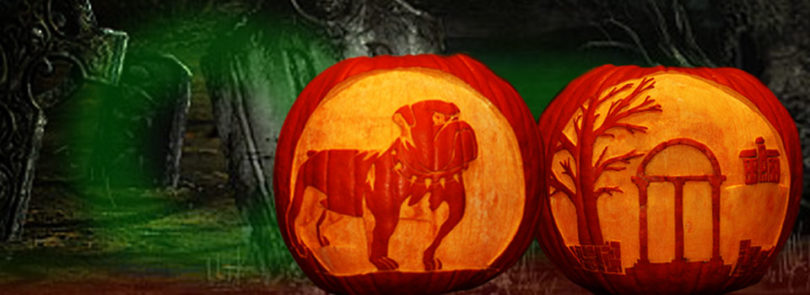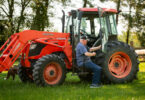Cucurbits and their familiar shapes were used to showcase student talents and bring together over 500 university students from the diverse academic areas of public relations and horticulture.
While not exactly a household name, cucurbits comprise the plant group with the most species used as human food. It includes cucumbers, squashes, pumpkins, gherkins, melons of all kinds and a variety of palatable gourds.
Cucurbits were used in two large introductory lecture classes for a fun, interdisciplinary hands-on learning activity. The brainstorm for this unique collaboration began when David Berle, assistant professor in the Department of Horticulture, and Myra Blackmon, public relations instructor in the Grady College of Journalism and Mass Communication, found themselves teaching classes in the same room in the Student Learning Center this semester.
After Berle’s class ended and before Blackmon’s began, they struck up a conversation and decided it would be great if an assignment could compel students from two very different disciplines to learn from each other and about each other. The two came up with an innovative and entertaining way to make that happen.
The 250 students in Berle’s introductory horticulture class had to complete a “Carve a Cucurbit” assignment. They turned in a variety of decorated and carved pumpkins, gourds, squashes and cucumbers. The 286 students in Blackmon’s introductory public relations class viewed the entries and cast ballots for their favorites.
Student carving and decorating talents were impressive with a number of UGA-themed entries. One student carved and painted a ferocious-looking Bulldog head, while another aspiring artist took great pains to replicate a detailed UGA Arch scene on one side of a pumpkin and a full-body Bulldog on the other. A number of gourds were decorated and there was even a dead-on carving of Berle himself. “That entry is my personal favorite,” joked Berle.
Blackmon’s ADPR 3850 class also incorporated cucurbits into an extra credit assignment dealing with public relations in nonprofit organizations. Student teams proposed creative ways to use cucurbits to promote a nonprofit organization. “The promotion could be a fundraiser, a health promotion, volunteer recruitment, awareness, whatever,” said Blackmon. “The more creative, the better.”
Berle’s HORT 2000 class members will get to select the top public relations proposals. At a November 21 luncheon, the winners from each class will be recognized. “The luncheon is another required project for my class,” noted Berle. “Students sign up for different fruits and vegetables and prepare a dish using them. There’s always lots of food.”
And it’s a good bet that at least some of those dishes will include cucurbits, a word that now rolls off the tongues of a new generation of university students.






